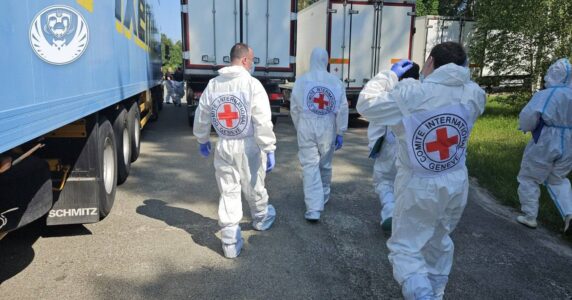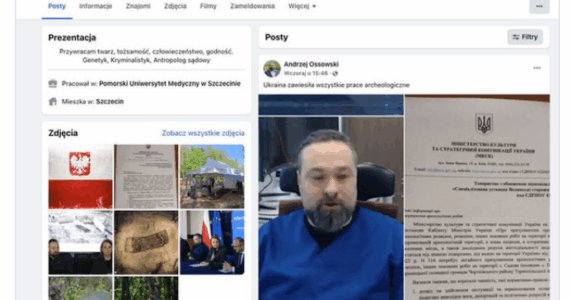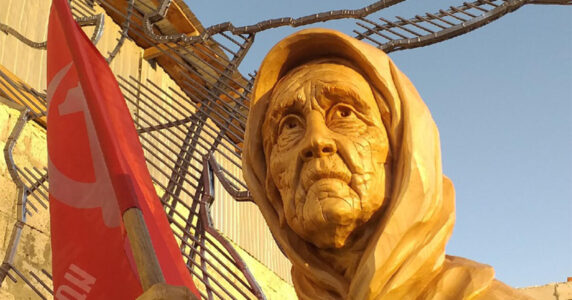Navigation and useful materials
Russia’s full-scale aggression against Ukraine has been going on for 18 days and counting. Thousands were killed, property was damaged, and the outflux of refugees is the largest since the end of World War II.
However, Russian troops have not been able to achieve strategic success during this time. They became embroiled in battle, failed to ensure air dominance and security of land communications, and suffered heavy combat and medical losses, also losing numerous weapons and military equipment. The pace of enemy advance has fallen. There seems to be an operational pause.
The occupation regime on temporarily occupied territories of Ukraine varies. The differences are determined by various factors, particularly military and political.
Military. Enemy control over large cities and centres, sufficient depth and relative stability of enemy rear, availability of resources for occupation. This primarily applies to certain territories of Kherson, Zaporizhia and Luhansk regions.
Political. The presence of specific plans for the political future of the occupied territories. The most clear and unambiguous are the plans for Luhansk and Donetsk regions, which Moscow believes to belong to the so-called “LPR” and “DPR”. In addition, as part of the relaunch of the Novorossiya project, we can expect attempts to proclaim “people’s republics” in Mykolaiv, Kherson, Zaporizhia and Kharkiv regions. Considering the actual successes of the occupiers, this is currently theoretically possible only in Kherson and partially Zaporizhia regions.
In Sumy, Chernihiv, Kyiv and Zhytomyr oblasts, the occupiers do not have sufficient depth of stable rear and control over significant administrative centres. In addition, they do not have a clear political concept for these territories. Apparently, the occupiers originally intended for them to be subordinate to the future puppet government in Kyiv, but this goal is currently unattainable.
The occupiers carry out administrative functions in the territories with relatively stable control through military commandants’ offices and collaborators among Ukrainian local authorities. One such collaborator is the mayor of Kupiansk (Kharkiv oblast) Hennadii Matsehora, who sided with the Russians. In Melitopol (Zaporizhia region), the occupiers appointed Halyna Danylchenko, a member of the city council, as the acting mayor.
In the occupied territories of Luhansk and Donetsk regions the administration of the so-called “LPR” and “DPR” is being established, personnel from these occupied formations is also getting involved in the Kherson and Zaporizhia regions.
For example, in Melitopol, an employee of the so-called “Ministry of Internal Affairs” of the so-called “LPR” Oleksii Selivanov was reported to be engaged in propaganda activities. In addition, the occupation contingent includes Russian Guard servicemen specializing in punitive functions.
In Ukraine, the occupiers were mostly faced with a hostile attitude of civilians. They are actively helping the Armed Forces of Ukraine and go to numerous protests with Ukrainian symbols in the occupied territories. Local authorities mostly refuse to collaborate with the enemy.
This prevents the aggressor from creating a propaganda image of “liberation.” In order to win over civilians or at least imitate care about them, the occupiers are sending “humanitarian convoys” to the occupied cities, sponsored by the Russian Ministry of Emergencies. Partly Russian “humanitarian aid” is provided on behalf of the leader of the Chechen Republic, Ramzan Kadyrov. On the other hand, the occupiers do not let through the convoys of humanitarian aid coming from the Ukrainian side, even firing at them.
Representatives of local Ukrainian authorities, politicians and public figures, businessmen and volunteers, current and former servicemen of Ukraine, members of the Anti-Terrorist Operation / Joint Forces Operation, journalists and other inconvenient and undesirable categories of the population happened to end up in the occupied territories among others. They face the threat of arrest, abduction, torture and murder.
The Centre for Strategic Communication and Information Security is closely following this hybrid component of the war started by Russia. We will regularly publish information on Ukrainians who have been killed or abducted.
In the frontline zone, the occupiers tend to resort to rapid massacres. Among others, they killed the priest of the Orthodox Church of Ukraine from Ivankiv Maksym Kozachyna, the mayor of Hostomel Yuri Prylypko (Kyiv region), a public activist and wheelchair user Oleksandr Kononov (Luhansk region). It can be assumed that these killings were carried out by the Russian servicemen and militants of the so-called “LPR,” not the punitive (“investigative”) agencies.
In contrast, the Russian occupiers carry out targeted hunting for people, their abduction and long-term detention with interrogations and torture in areas with tighter control, especially in the Kherson and Zaporizhia regions. Meanwhile, aggressor special services are using local traitors, such as Kherson resident Kyrylo Stremousov (his correspondence with supervisors, probably from the FSB, has been published).
There have already been cases of hunting the key representatives of local authorities in the occupied areas. The invaders abducted Melitopol mayor Ivan Fedorov and Melitopol District Council chair Serhii Pryima. They also broke into the private flat of former Melitopol mayor Serhii Minko, who was not there at the time. In addition, abductions of the heads of Nikolskyi (Donetsk region) Vasyl Mitko and Dniprorudne (Zaporizhia region) Yevhen Matvieiev have been reported.
Apart from government officials, the occupiers are interested in Ukrainian special services, anti-terrorist operation / JFO veterans, and activists of patriotic Ukrainian organizations, movements, and parties. A former employee of Ukrainian counter-intelligence agencies, Maksym Zaporozhets, has been kidnapped in Kherson. Searches are purposefully carried out in flat buildings where the families of SBU and other law enforcement officers reside. Fortunately, the vast majority of their residents took care of their own safety in advance.
The punitive occupation authorities are targeting activists who organize, participate in or cover the protests against the invaders in the media. In Melitopol, Russians detained protest organizer Olha Haisumova; in Kherson, activist Oleksandr Tarasov, and in Kakhovka, journalist Oleh Baturyn. In Nova Kakhovka, occupiers broke into the flat of protest leader Halyna Zakharchenko, who was fortunately not at home at the moment.
In some cases, the occupiers release previously detained people after “preventive conversations.” This was the situation of Zaporizhia oblast council member Leila Ibrahimova and Melitopol resident Serhii Kyrychuk, who was caught listening to the song Bayraktar in his car.
It can be concluded that the occupiers have not yet fully unleashed the flywheel of the repressive machine. Intoxicated by their own propaganda, they were unprepared for such a cold reception by Ukrainians. Now, the enemies are strengthening their organizational capabilities, gathering information and thinking about a further plan of action.
While the active phase of hostilities continues, it is the effective resistance of the Armed Forces of Ukraine that causes the invaders a lot of pain.
If you have found a spelling error, please, notify us by selecting that text and pressing Ctrl+Enter.


